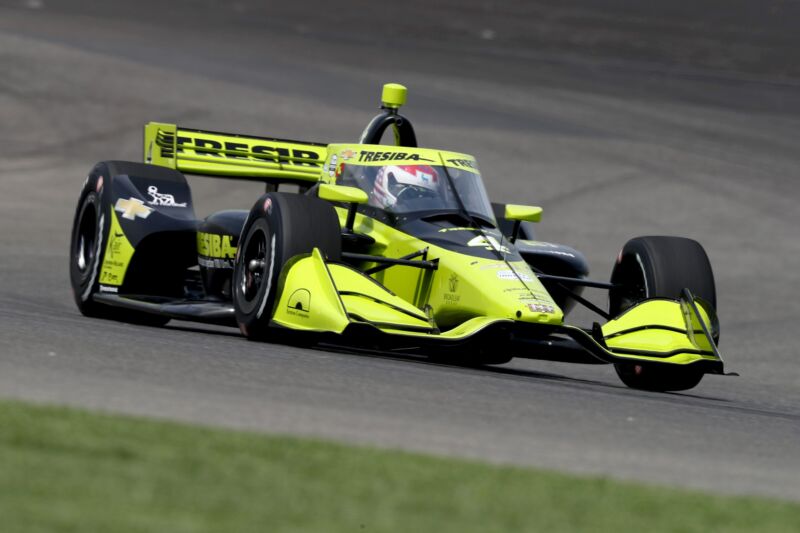
Enlarge / Charlie Kimball, driver of the #4 TRESIBA / AJ FOYT RACING Chevrolet, races during practice for the NTT IndyCar Series GMR Grand Prix at Indianapolis Motor Speedway on July 03, 2020 in Indianapolis, Indiana. (credit: Jamie Squire/Getty Images)
Like most of us, 2020 hasn't exactly going to plan for IndyCar driver Charlie Kimball. Here in July, we should already be midway through the season. But the sport only waved the green flag in early June, starting a condensed 14-race season that wraps up—hopefully—in Florida in October. It promises to be hard work for the drivers; with no power steering and high cornering loads, an IndyCar requires more muscles to drive than most race cars.
"The challenge in driving an IndyCar is that, at 200 miles an hour, it produces 5,000 pounds of downforce. I've got 750 horsepower under my right foot, and I have no power steering, no power brake. Plus the adrenaline and the physiological response to competition means that during a race my average heart rate is between 150 and 170 beats per minute," he told Ars when we spoke recently. And don't forget—an IndyCar race can can last well over three hours if we're talking about something like the Indy 500.
The best way to be race-fit is to do a lot of racing, but the extended off-season obviously made that impossible. But Kimball thinks he's better prepared today than he was back in March when the original season-opener was cancelled.
No comments:
Post a Comment